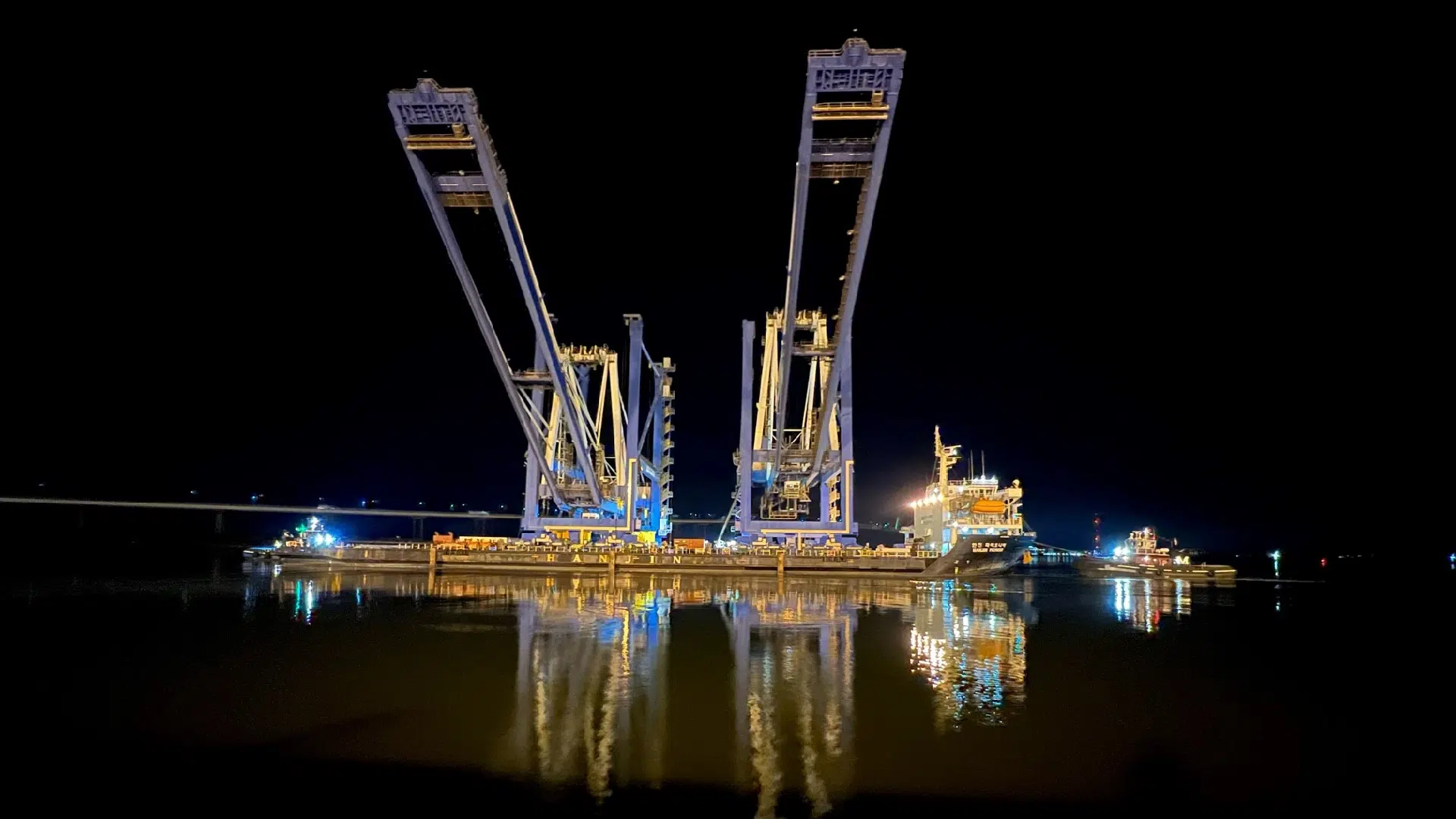DP World will begin receiving ships using its two new container cranes in June, Port Saint John president and CEO Craig Estabrooks told the audience at the authority’s AGM on May 31.
The event kicked off Port Days 2023, a two-day celebration of the contribution the port makes to Saint John and the province.
“2022 was the largest construction year of that seven-year journey to modernization,” said Estabrooks. The crowning achievement of which was the arrival of two super-post-Panamax quay cranes which will allow the terminal to not only handle two vessels simultaneously but will also allow the operator, DP World, to take ships up to 10,000 twenty-foot-equivalent units (TEU).
“We materially finished the [terminal and crane project] at the end of March. We are now working on small deficiencies and are ready to turn this investment over to DP World, who’s going to create economic activity and bring ships here in the month of June 2023 into this new terminal with the new cranes.”
“The cranes are going to be what creates a lot of economic return,” Estabrooks continued. “The community reaction to the cranes was what blew me away. In a cold week in the winter in Saint John, New Brunswick, people were lining the streets to see these cranes arrive on a Friday afternoon.”
That added capacity will help 2023 have the potential to be even more successful than 2022 in terms of container traffic. The port saw a record 150,000 TEUs in 2022 up from 86,000 the year before. Liquid bulk made up the majority of the 27.4 million metric tonnes of cargo that came through the port in 2022, actually down slightly from 2021 which saw 28.8 million metric tonnes. Much of that liquid tonnage was oil for the Irving refinery.
Last year saw the completion of a number of significant investments in the port, in addition to the new cranes including an upgrade to the terminal operating system, a truck gate system and deals to bring new rail connections to the port.
“The rail investment in our community has turned into a value proposition for the Port of Saint John. We connect into three class one railways, we have the attention of CPKC (Canadian Pacific Kansas City) as their east cost connection for North America in their new integrated rail network.”
Last year was also an opportunity for the port to reflect on the impact of COVID on a big part of its operations – cruise ships.
“It was a long two years not to see cruise ships in this harbour,” Estabrooks said. “It was challenging. It’s an almost $70-million economic impact to the province of New Brunswick.”
Estabrooks described the lack of cruise ship passenger traffic to small businesses in Saint John during the pandemic cruise shutdown as “a big loss to the community.” But he was very optimistic about the future of the cruise industry’s impact on the region, saying Saint John is anticipating 190,000 passengers this season and that the city has made significant strides like Area 506, and will continue to make strides with the development happening currently at Fundy Quay.
“Not only is the Container Village important, it’s going to be a catalyst to help continue the revitalization of Uptown Saint John,” Estabrooks said.
Port chair Jack Keir described the growth at the port in 2022 as “awakening the sleeping giant,” which was also the title of the annual report.
“In many ways, 2022 was a year when decades of hard work by many culminated in the launch of a bold new chapter for our port.”
Harkening back to the days when Saint John was known as “Canada’s winter port,” Keir said that Port Saint John recognized years ago that to return to its former glory it would need to “expand and modernize,” which is exactly what it’s done, in the process attracting new partners to help it along its journey including cargo company MSC, port operators DP World and container line CMA CGM.
Income and vessel calls were both up in the Port of Saint John in 2022, at $4,858,000 versus $4,732,000 in 2021 and 921 versus 919 in 2021, respectively.
The port hopes to fill in the slips by 2025, and Estabrooks says they are actively scoping for the next infrastructure investment.
“800,000 TEUs is going to be the capacity at the terminal but it has to be fluid inland. We have to be working with all the partners to make sure we have the capacity on rail and truck and other aspects of the port,” Estabrooks said.
Finally, Estabrooks reiterated his commitment to transition zones including parks, greenspaces, and trailways, marking the boundaries between the industrial port area and a livable city.
“I truly believe strong ports and industrial centres make the best cities in the world.”
Port Days continue to June 1, with a series of speakers from the cargo, rail, cruise, and economic development sectors.
Alex Graham is a reporter with Huddle, an Acadia Broadcasting content partner.







